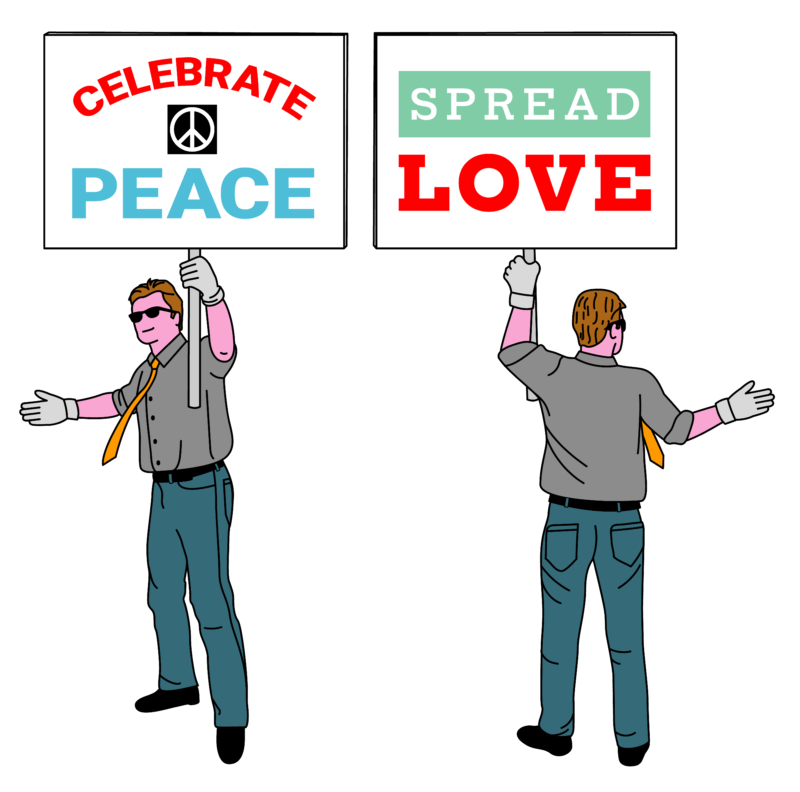Hollywood Boulevard and Hillhurst Avenue meet at the north end of one of the most complicated intersections in Los Angeles—a five-sided maze that seems to confuse even the stoplights themselves, and the right of way is often taken simply by those brave enough to claim it. The intersection marks the edges of several neighborhoods—Los Feliz, East Hollywood, and Virgil Village—but the area feels like it belongs to none of them. It’s the embodiment of sprawl.
Prior to the pandemic, it was not uncommon to find a certain pedestrian setting up shop here. Outside of what remains of Good Luck Bar, a now-shuttered dive that was evicted to make room for a luxury hotel, this pedestrian would be dressed in Falling Down–style business-casual attire, holding a sign, its edges a little worse for wear after years of repeated use. celebrate peace, the sign said on one side, spread love on the other. He’d then stand there for two hours or so, often dancing and gesticulating excitedly, beckoning the rush-hour traffic to “let me hear it” as the cars passed by in a fluid stream, occasionally nothing more than bright headlights glittering in the dark. Some would honk. Some would give him the finger. Most wouldn’t respond at all.
You have reached your article limit
Sign up for a digital subscription and continue reading all new issues, plus our entire archives, for just $1.50/month.
Already a subscriber? Sign in





